4653-11-6
| 中文名 | 4-(2-噻吩基)丁酸 |
|---|---|
| 英文名 | 4-(2-thienyl)butyric acid |
| 中文别名 |
2-噻吩丁酸
4-(2-噻吩)丁酸 |
| 英文别名 |
4-thiophen-2-ylbutanoic acid
MFCD00005463 4-(2-Thienyl)butyric acid 4-(Thiophen-2-yl)butanoic acid EINECS 225-090-0 |
| 密度 | 1.2±0.1 g/cm3 |
|---|---|
| 沸点 | 296.9±15.0 °C at 760 mmHg |
| 分子式 | C8H10O2S |
| 分子量 | 170.229 |
| 闪点 | 133.4±20.4 °C |
| 精确质量 | 170.040146 |
| PSA | 65.54000 |
| LogP | 2.10 |
| 外观性状 | 透明略褐色液体 |
| 蒸汽压 | 0.0±0.7 mmHg at 25°C |
| 折射率 | 1.559 |
| 储存条件 | 避光,通风干燥处,密封保存 |
| 稳定性 | 常温常压下稳定 |
| 分子结构 | 1、 摩尔折射率:45.01 2、 摩尔体积(m3/mol):139.3 3、 等张比容(90.2K):368.3 4、 表面张力(dyne/cm):48.8 5、 极化率(10 -24cm 3):17.84 |
| 计算化学 | 1、 疏水参数计算参考值(XlogP):1.8 2、 氢键供体数量:1 3、 氢键受体数量:2 4、 可旋转化学键数量:4 5、 拓扑分子极性表面积(TPSA):37.3 6、 重原子数量:11 7、 表面电荷:0 8、 复杂度:136 9、 同位素原子数量:0 10、 确定原子立构中心数量:0 11、 不确定原子立构中心数量:0 12、 确定化学键立构中心数量:0 13、 不确定化学键立构中心数量:0 14、 共价键单元数量:1 |
| 更多 | 1. 性状:无色液体 2. 密度(g/mL,25 ºC):1.169 3. 相对蒸汽密度(g/mL,空气=1):不确定 4. 熔点(ºC):不确定 5. 沸点(ºC,常压):不确定 6. 沸点(ºC,0.3mmHg):122 7. 折射率:1.532 8. 闪点(ºF):>230 9. 比旋光度(º,C=1, H2O):不确定 10. 燃点(ºC):>110 11. 蒸气压(kPa,25ºC):不确定 12. 饱和蒸气压(kPa,60ºC):不确定 13. 燃烧热(KJ/mol):不确定 14. 临界温度(ºC):不确定 15. 临界压力(KPa):不确定 16. 油水(辛醇/水)分配系数的对数值:不确定 17. 爆炸上限(%,V/V):不确定 18. 爆炸下限(%,V/V):不确定 19. 溶解性:不确定 |
Synonym:2-Thiophenebutyric Acid Section 2 - COMPOSITION, INFORMATION ON INGREDIENTS
Risk Phrases: None Listed. Section 3 - HAZARDS IDENTIFICATION EMERGENCY OVERVIEW
The toxicological properties of this material have not been fully investigated. Potential Health Effects Eye: May cause eye irritation. Skin: May cause skin irritation. Ingestion: May cause irritation of the digestive tract. The toxicological properties of this substance have not been fully investigated. Inhalation: May cause respiratory tract irritation. The toxicological properties of this substance have not been fully investigated. Chronic: No information found. Section 4 - FIRST AID MEASURES Eyes: Flush eyes with plenty of water for at least 15 minutes, occasionally lifting the upper and lower eyelids. Get medical aid. Skin: Get medical aid. Flush skin with plenty of water for at least 15 minutes while removing contaminated clothing and shoes. Wash clothing before reuse. Ingestion: Never give anything by mouth to an unconscious person. Get medical aid. Do NOT induce vomiting. If conscious and alert, rinse mouth and drink 2-4 cupfuls of milk or water. Inhalation: Remove from exposure and move to fresh air immediately. If not breathing, give artificial respiration. If breathing is difficult, give oxygen. Get medical aid. Notes to Physician: Section 5 - FIRE FIGHTING MEASURES General Information: As in any fire, wear a self-contained breathing apparatus in pressure-demand, MSHA/NIOSH (approved or equivalent), and full protective gear. During a fire, irritating and highly toxic gases may be generated by thermal decomposition or combustion. Containers may explode in the heat of a fire. Vapors may be heavier than air. They can spread along the ground and collect in low or confined areas. Runoff from fire control or dilution water may cause pollution. Extinguishing Media: Use water spray to cool fire-exposed containers. Use agent most appropriate to extinguish fire. Section 6 - ACCIDENTAL RELEASE MEASURES General Information: Use proper personal protective equipment as indicated in Section 8. Spills/Leaks: Absorb spill with inert material (e.g. vermiculite, sand or earth), then place in suitable container. Avoid runoff into storm sewers and ditches which lead to waterways. Clean up spills immediately, observing precautions in the Protective Equipment section. Provide ventilation. Section 7 - HANDLING and STORAGE Handling: Wash thoroughly after handling. Remove contaminated clothing and wash before reuse. Use with adequate ventilation. Avoid contact with eyes, skin, and clothing. Keep container tightly closed. Avoid ingestion and inhalation. Storage: Keep container closed when not in use. Store in a tightly closed container. Store in a cool, dry, well-ventilated area away from incompatible substances. Section 8 - EXPOSURE CONTROLS, PERSONAL PROTECTION Engineering Controls: Facilities storing or utilizing this material should be equipped with an eyewash facility and a safety shower. Use process enclosure, local exhaust ventilation, or other engineering controls to control airborne levels. Exposure Limits CAS# 4653-11-6: Personal Protective Equipment Eyes: Wear appropriate protective eyeglasses or chemical safety goggles as described by OSHA's eye and face protection regulations in 29 CFR 1910.133 or European Standard EN166. Skin: Wear appropriate protective gloves to prevent skin exposure. Clothing: Wear appropriate protective clothing to minimize contact with skin. Respirators: Follow the OSHA respirator regulations found in 29 CFR 1910.134 or European Standard EN 149. Use a NIOSH/MSHA or European Standard EN 149 approved respirator if exposure limits are exceeded or if irritation or other symptoms are experienced. Section 9 - PHYSICAL AND CHEMICAL PROPERTIES Physical State: Liquid Color: clear slight brown Odor: Not available. pH: Not available. Vapor Pressure: Not available. Viscosity: Not available. Boiling Point: Not available. Freezing/Melting Point: Not available. Autoignition Temperature: Not available. Flash Point: > 112 deg C (> 233.60 deg F) Explosion Limits, lower: Not available. Explosion Limits, upper: Not available. Decomposition Temperature: Solubility in water: Specific Gravity/Density: 1.1690g/cm3 Molecular Formula: C8H10O2S Molecular Weight: 170.23 Section 10 - STABILITY AND REACTIVITY Chemical Stability: Stable under normal temperatures and pressures. Conditions to Avoid: Incompatible materials, excess heat, strong oxidants. Incompatibilities with Other Materials: Oxidizing agents. Hazardous Decomposition Products: Carbon monoxide, irritating and toxic fumes and gases, carbon dioxide, sulfur oxides (SOx), including sulfur oxide and sulfur dioxide. Hazardous Polymerization: Has not been reported Section 11 - TOXICOLOGICAL INFORMATION RTECS#: CAS# 4653-11-6 unlisted. LD50/LC50: Not available. Carcinogenicity: 4-(2-Thienyl)butyric Acid - Not listed by ACGIH, IARC, or NTP. Section 12 - ECOLOGICAL INFORMATION Section 13 - DISPOSAL CONSIDERATIONS Dispose of in a manner consistent with federal, state, and local regulations. Section 14 - TRANSPORT INFORMATION IATA Not regulated as a hazardous material. IMO Not regulated as a hazardous material. RID/ADR Not regulated as a hazardous material. Section 15 - REGULATORY INFORMATION European/International Regulations European Labeling in Accordance with EC Directives Hazard Symbols: Not available. Risk Phrases: Safety Phrases: S 24/25 Avoid contact with skin and eyes. WGK (Water Danger/Protection) CAS# 4653-11-6: No information available. Canada None of the chemicals in this product are listed on the DSL/NDSL list. CAS# 4653-11-6 is not listed on Canada's Ingredient Disclosure List. US FEDERAL TSCA CAS# 4653-11-6 is not listed on the TSCA inventory. It is for research and development use only. SECTION 16 - ADDITIONAL INFORMATION N/A |
|
毒理学数据: 主要的刺激性影响 在皮肤上面:刺激皮肤和粘膜 在眼睛上面:刺激的影响 致敏作用:没有已知的敏化影响 生态学数据: 通常对水是不危害的,若无政府许可,勿将材料排入周围环境
|
| 符号 |

GHS07 |
|---|---|
| 信号词 | Warning |
| 危害声明 | H315-H319-H335 |
| 警示性声明 | P261-P305 + P351 + P338 |
| 个人防护装备 | Eyeshields;full-face respirator (US);Gloves;multi-purpose combination respirator cartridge (US);type ABEK (EN14387) respirator filter |
| 危害码 (欧洲) | Xi |
| 风险声明 (欧洲) | R36/37/38 |
| 安全声明 (欧洲) | S26-S37/39 |
| 危险品运输编码 | NONH for all modes of transport |
| WGK德国 | 3 |
| 海关编码 | 2934999090 |
|
~85% 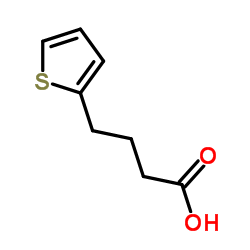
4653-11-6 |
| 文献:European Journal of Medicinal Chemistry, , vol. 33, # 11 p. 867 - 877 |
|
~92% 
4653-11-6 |
| 文献:Journal of Organic Chemistry, , vol. 59, # 23 p. 7072 - 7084 |
|
~% 
4653-11-6 |
| 文献:Journal of the American Chemical Society, , vol. 74, p. 1066 |
|
~% 
4653-11-6 |
| 文献:Journal of Organic Chemistry, , vol. 59, # 23 p. 7072 - 7084 |
|
~% 
4653-11-6 |
| 文献:Chemistry - A European Journal, , vol. 5, # 3 p. 937 - 950 |
| 上游产品 3 | |
|---|---|
| 下游产品 10 | |
| 海关编码 | 2934999090 |
|---|---|
| 中文概述 | 2934999090. 其他杂环化合物. 增值税率:17.0%. 退税率:13.0%. 监管条件:无. 最惠国关税:6.5%. 普通关税:20.0% |
| 申报要素 | 品名, 成分含量, 用途 |
| Summary | 2934999090. other heterocyclic compounds. VAT:17.0%. Tax rebate rate:13.0%. . MFN tariff:6.5%. General tariff:20.0% |


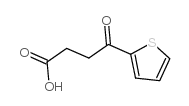



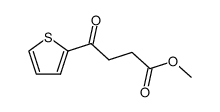
![4,5,6,7-四氢苯并[b]噻吩-4-胺结构式](https://image.chemsrc.com/caspic/282/58094-17-0.png)
![4,5,6,7-四氢苯并[B]噻吩二甲酸结构式](https://image.chemsrc.com/caspic/207/40133-07-1.png)
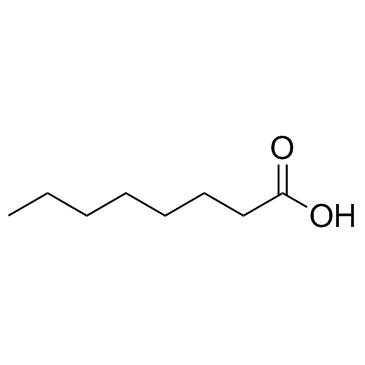
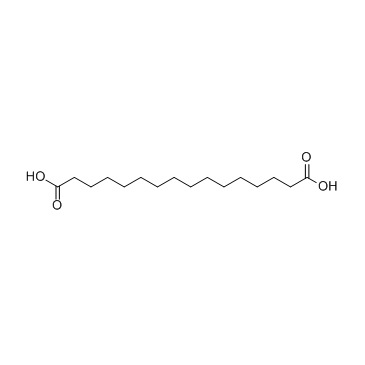
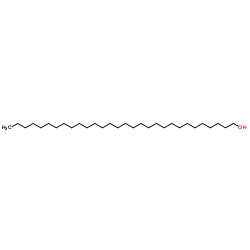
![4,5,6,7-四氢苯并[b]噻吩结构式](https://image.chemsrc.com/caspic/148/13129-17-4.png)

![6,7-二氢-4-苯并[b]噻吩酮结构式](https://image.chemsrc.com/caspic/327/13414-95-4.png)
![2-乙酰基-6,7-二氢苯并[b]噻吩-4-(5H)-酮结构式](https://image.chemsrc.com/caspic/213/74458-89-2.png)
![2-propionyl-6,7-dihydrobenzo[b]thiophen-4(5H)one结构式](https://image.chemsrc.com/caspic/081/74459-08-8.png)